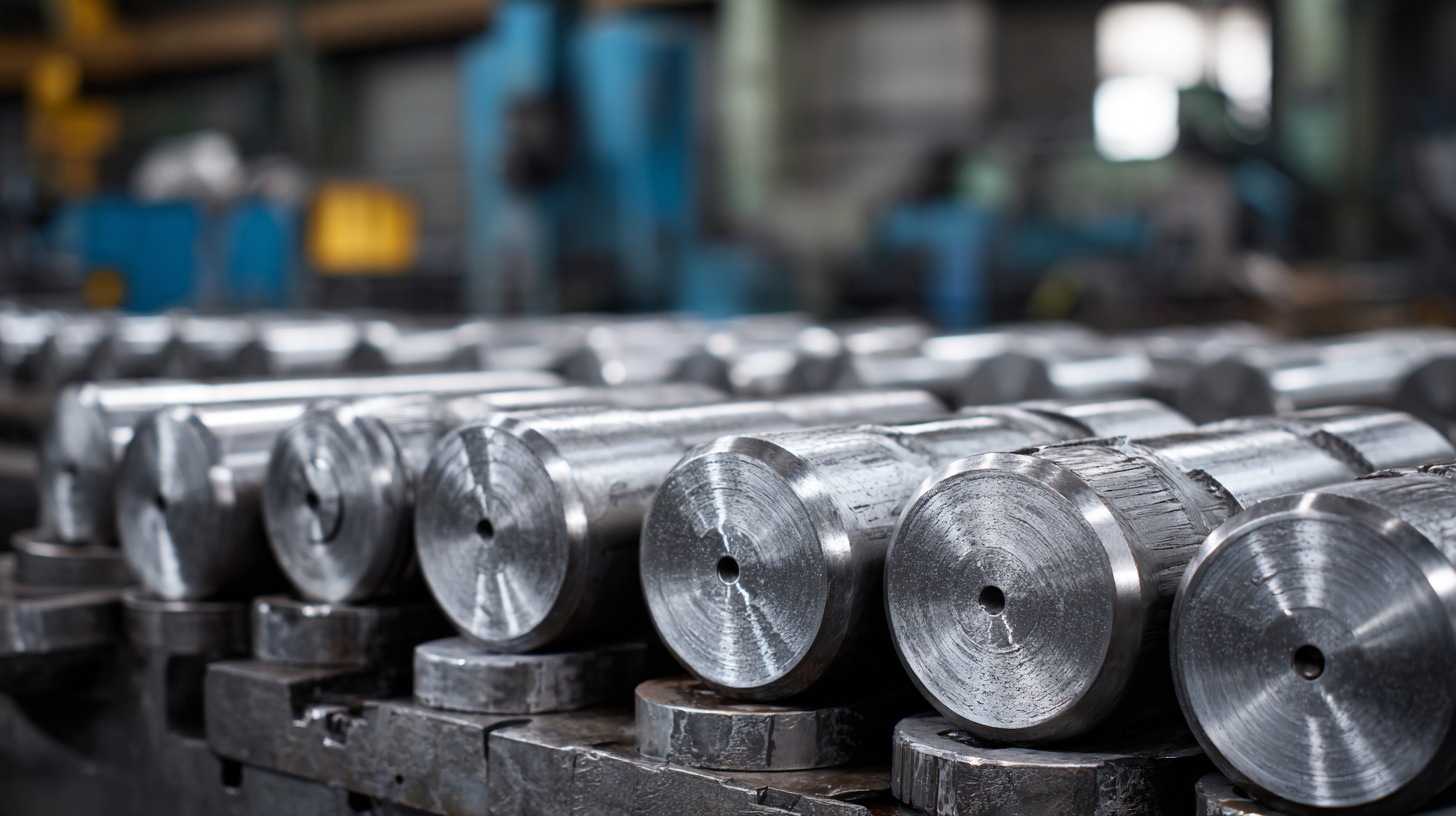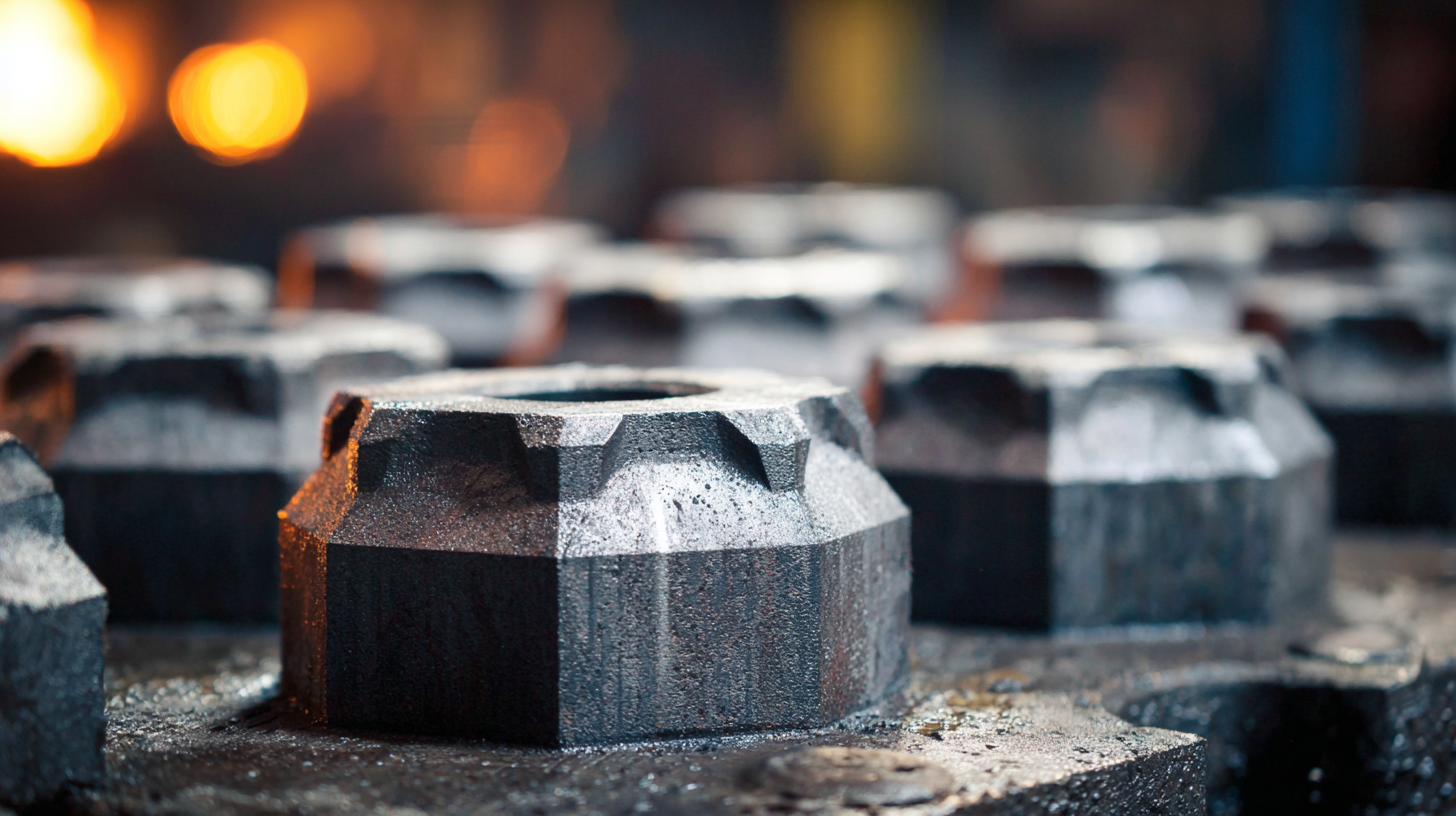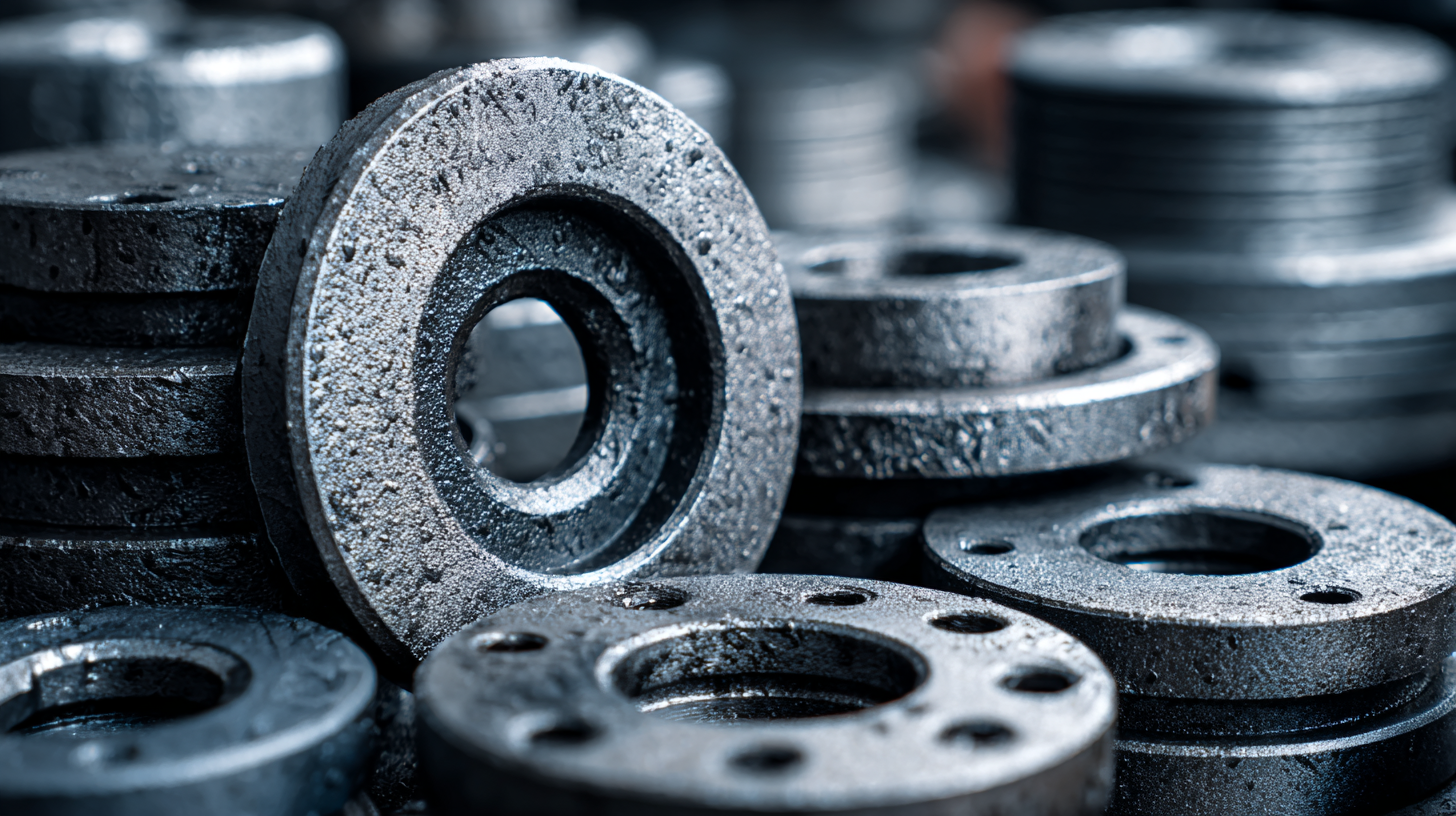Leave Your Message
-
Phone
-
E-mail
When it comes to manufacturing, selecting the right components can significantly impact both efficiency and product quality. Among the various materials available, Forged Steel Parts stand out due to their superior strength, durability, and resistance to wear and fatigue. This blog will delve into how to effectively identify the best Forged Steel Parts for your specific manufacturing needs. We will explore essential factors such as material properties, manufacturing processes, and comparison criteria that can guide your decision-making.

By understanding these key aspects, manufacturers can ensure that they choose the most suitable parts, optimizing their production processes and enhancing overall performance. Join us as we provide insights and comparisons that will aid in navigating the complexities of selecting forged steel components.
When selecting forged steel parts for manufacturing, it’s vital to consider several key characteristics that indicate high quality. First and foremost, the material composition plays a critical role. High-quality forged steel typically contains alloys that enhance strength and durability, such as carbon, manganese, and chromium. These elements improve resistance to wear and fatigue, ensuring that the parts can withstand the demands of various applications.
Another important characteristic is the precision of the forging process. High-quality forged steel parts should exhibit excellent dimensional accuracy and surface finish. This precision not only ensures proper fit and function but also minimizes the risk of failure during operation. Additionally, the heat treatment process is crucial; parts that have been properly tempered and quenched are more likely to meet the rigorous performance standards required in manufacturing. By focusing on these key characteristics, manufacturers can identify forged steel parts that will deliver reliability and longevity in their operations.
| Characteristic | Description | Importance | Typical Applications |
|---|---|---|---|
| Material Composition | High carbon content increases strength and hardness. | Critical for load-bearing applications. | Automotive parts, industrial machinery. |
| Grain Structure | Fine, uniform grains enhance durability and resistance to stress. | Essential for performance under extreme conditions. | Aerospace components, high-load structures. |
| Heat Treatment | Process to enhance mechanical properties by altering material structure. | Improves hardness, toughness, and ductility. | Tooling, fasteners, and critical components. |
| Dimensional Tolerances | Precision in measurements that ensures proper fitting in assemblies. | Vital for the functionality and performance of the final product. | Robotics, automotive, and heavy machinery. |
| Surface Finish | The quality of the surface that can affect stress concentration and fatigue resistance. | Directly influences the longevity and performance of components. | Valves, gears, and high-precision instruments. |
In the ever-evolving metal forging industry, the selection of materials for forged steel parts plays a critical role in determining their overall performance. As manufacturers strive to enhance the durability and functionality of their products, understanding the specific characteristics of different steel alloys becomes essential. Key factors such as tensile strength, resistance to wear, and deformation capabilities must be considered to ensure optimal performance under various operating conditions. By carefully evaluating these attributes, manufacturers can tailor their forged components to meet the specific demands of their applications.

Technological advancements, particularly in manufacturing processes and material science, are increasingly driving market growth in the forged steel sector. Innovations such as computer-aided design (CAD), simulation software, and advanced heat treatment methods enable manufacturers to optimize the properties of forged steel components for enhanced performance. As the industry shifts towards sustainable and green manufacturing practices, there is a growing emphasis on using recycled materials and reducing waste throughout the production process. This not only contributes to environmental sustainability but also meets the increasing demand for eco-friendly products in the marketplace. As the landscape of metal forging continues to evolve, manufacturers must remain proactive in material selection and adaptation to technological advancements to ensure their competitiveness and longevity in the industry.
As we approach 2025, the forged steel manufacturing industry is poised for significant advancements driven by emerging technologies. According to a report by MarketsandMarkets, the global demand for forged steel is expected to grow at a CAGR of 4.6% from 2020 to 2025, reaching a market size of approximately $150 billion. This growth is largely attributed to innovative manufacturing processes such as automated forging systems, which enhance precision and consistency in production.
One of the most notable technologies is the integration of artificial intelligence (AI) and machine learning in the forging process. A study from TechSci Research highlights that AI-driven tools can optimize production schedules and reduce material waste by up to 20%. Furthermore, the adoption of advanced materials and heat treatment techniques is enabling manufacturers to produce lighter, stronger forged steel parts, essential for industries such as automotive and aerospace, where performance and weight reduction are crucial.
Additionally, 3D printing of tool components for forging dies is anticipated to revolutionize the industry by reducing lead times and enabling complex geometries that were previously unmanufacturable. According to a report from Grand View Research, the global market for 3D printing in manufacturing is expected to reach $41 billion by 2026, reflecting a burgeoning intersection of traditional forging and additive manufacturing. These technological advancements will not only enhance the production capabilities but also drive sustainability efforts across the forged steel sector.
When evaluating suppliers for forged steel parts, it's crucial to assess their experience and expertise in the industry. Look for providers with a proven track record, as their history signifies not only reliability but also their ability to meet diverse manufacturing needs. Experienced suppliers often have established quality control processes in place, which ensures that the parts produced adhere to industry standards and can withstand the rigors of their intended applications.
Another key factor is the supplier's capability for customization. Your manufacturing needs may require unique specifications, and a good supplier should be able to accommodate these requirements efficiently. Engage with potential partners to discuss their range of services, including design assistance, material selection, and production techniques. Finally, consider their communication practices and customer support. A responsive supplier that prioritizes clear communication can enhance collaboration, making the entire manufacturing process smoother and ultimately leading to better-quality forged steel parts for your projects.

When considering investments in forged steel components, cost-effectiveness and longevity are paramount. Forged steel parts offer enhanced durability, making them a favorable choice for manufacturers looking to optimize their operational lifespan and minimize replacements. The evolution of the metal forging industry has been profoundly influenced by technological advancements, enabling the production of highly reliable components that not only reduce costs over time but also meet evolving industry standards.
To identify the best forged steel parts for your needs, it's crucial to evaluate the manufacturing processes and materials used. Look for products that demonstrate a high level of craftsmanship and innovation. For example, advanced forging techniques allow manufacturers to improve the performance attributes of their products while ensuring they remain environmentally friendly.
Here are some tips for selecting top-quality forged steel components: first, prioritize suppliers who focus on sustainability and green manufacturing practices to align with modern environmental considerations. Second, assess the hardness and overall design of the components, as these factors significantly impact their cutting precision and longevity. By choosing wisely, manufacturers can reap the benefits of forged steel's strength and resilience, effectively investing in their production capabilities.
